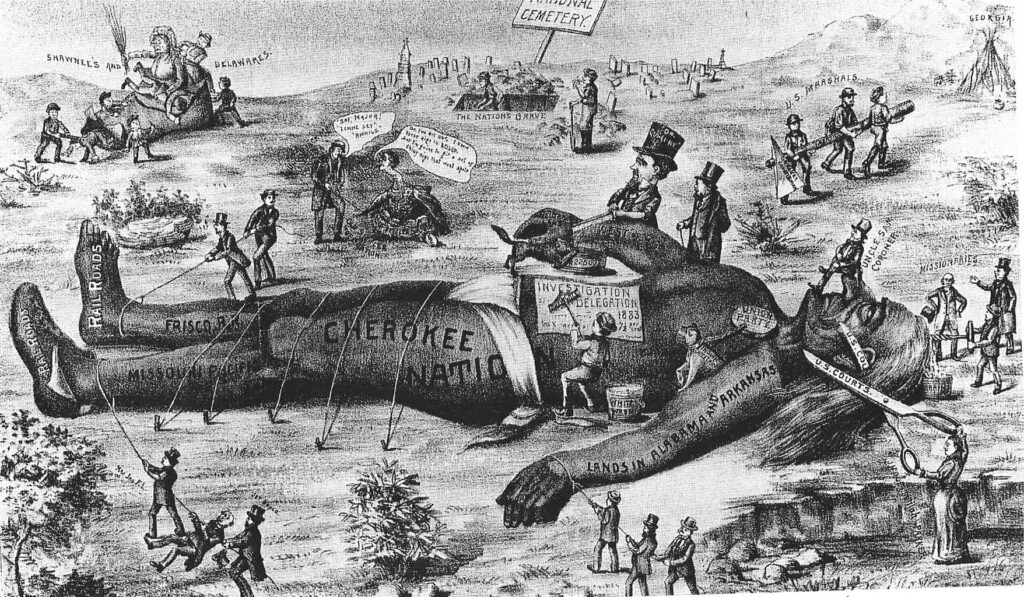Sean Adams said it best: “Whether they adored or loathed him – and most commenters break down into these extreme camps – Americans found it difficult to avoid Andrew Jackson.”[1]
The War of 1815 ended with the Battle of New Orleans, where Jackson’s military tactics were one of the sole reasons for victory. The military equipment that Jackson and his men used were some of the first American-made products from the building Industrial Revolution. However, not everything that Jackson did can be remembered in such a glorifying light.
Andrew Jackson was also responsible for Native American removal, an event that the United States of America is still attempting to come to terms with and correct today.
Jackson believed that aggressive expansion was the only way to fulfill America’s Manifest Destiny. One of the problems with expansion was that Native Americans lived on land that America claimed as its own. Therefore, it was decided that these people had to be forcibly removed and sent to different land. Thus began the Trail of Tears.
In reality, the beginning of the Trail of Tears began long before President Jackson pushed congress to enforce the Indian Removal Act of 1830. Long before that, on January 27, 1825, President James Monroe approved a plan created by Secretary of War James C. Calhoun to remove Native Americans from their land. The main difference between Jackson’s Trail of Tears and Calhoun’s plan was that Calhoun planned to recognize Native American groups as individual nations.
Calhoun’s plan called for the resettlement of an estimated hundred thousand Native Americans west of the Mississippi River. The plan also proposed the appropriation of $95,000 to get this done.

Within a month, the Creeks signed the Treaty of Indian Springs. With this treaty, the Creeks agreed to settle on lands in the West by September 1, 1826. Many disagreed with this plan, including both tribal members and whites. The agent assigned to the Cherokee, John Crowell, protested the manner in which the treaty was negotiated. He also recommended special federal protection for the Creek leader, William McIntosh, who signed the treaty. The request was not accepted, and McIntosh was soon assassinated by members of his own tribe.
Soon after, the Creeks were successful in having the Treaty of Indian Springs set aside. However, President John Q. Adams negotiated the Treaty of Washington, which basically reimposed the same terms on the Creeks.
James Monroe, John Q. Adams, and Andrew Jackson were just three high-profile American figures who called for removing Native Americans from the land they lived on. Still, it would be Andrew Jackson that pushed for what we know as the Trail of Tears.
[1] Sean Patrick Adams, A Companion to the Era of Andrew Jackson (John Wiley & Sons, 2013), 1.

Leave a Reply